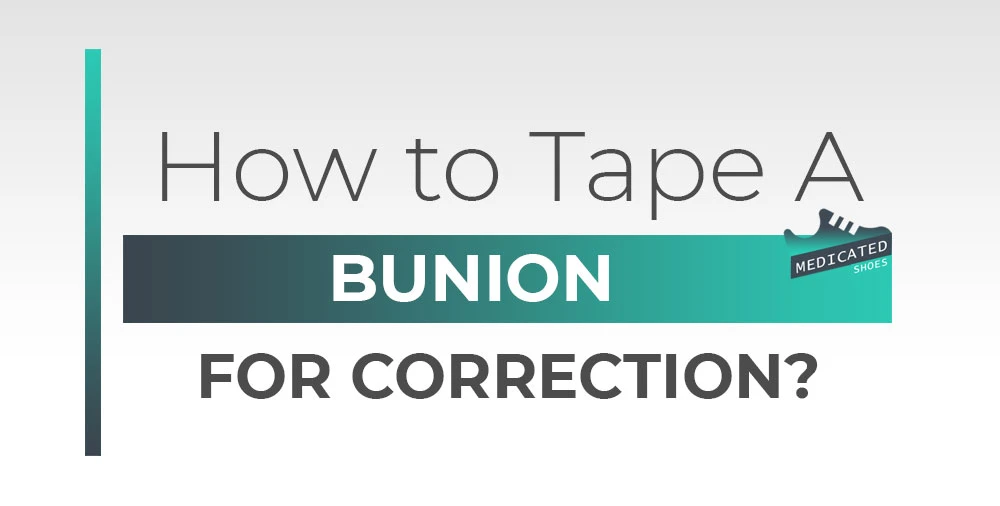Taping a bunion also known as a hallux valgus is a common method of treatment that can help to realign the toes and alleviate some of the pain and discomfort associated with this deformity. By applying tape to the affected area it is possible to gently guide the toes back into their natural position and provide support to the joint.
In this guide, we will discuss the steps for taping a bunion for correction and provide some tips for achieving the best results.
How to Tape a Bunion for Correction?
While taping a bunion is not a substitute for proper medical care and treatment, it can be an effective way to manage the symptoms of a bunion and improve overall foot function.
Begin by washing and drying your feet thoroughly. This will help to ensure that the tape sticks properly and does not become loose or slip off.
- Cut a strip of zinc oxide tape or any other type of rigid sports tape that is approximately 2 inches wide and long enough to encircle your toe.
- Place the tape on a flat surface, sticky side up.
- Position your foot so that the bunion is directly above the tape.
- Slowly lower your foot onto the tape, making sure that the bunion is positioned in the center of the tape.
- Press down firmly on the tape to ensure that it adheres to your skin.
- Wrap the tape around your toe, pulling it tight as you go. Be sure to leave enough slack in the tape so that your toe can move freely.
- Once you have completely encircled your toe, press down on the tape again to ensure that it is secured in place.
- Repeat this process on the other foot if necessary.
Note:
Wear the tape for as long as recommended by your healthcare provider or until you feel relief from your bunion pain. It is important to remove the tape at least once a day to allow your skin to breathe and check for any signs of irritation or discomfort.
Taping Tips:
- It is important to consult with a healthcare provider before attempting to tape a bunion, as this may not be suitable for everyone.
- Be sure to use clean and dry tape each time you apply it to your bunion.
- Avoid wearing tight or constricting shoes while taping your bunion, as this can cause the tape to come loose or shift out of place.
- If you experience any pain or discomfort while taping your bunion remove the tape immediately and consult with a healthcare provider.
Can you Fix Bunion with Tape?
It is generally not recommended to try to treat a bunion with tape as a standalone treatment. While taping may help to alleviate some of the symptoms of a bunion, such as a discomfort or pressure it is not a cure for the condition and is unlikely to permanently fix the deformity. Additionally, taping the foot in an effort to correct a bunion could potentially cause further harm if done improperly.
Does Bunion Taping Really Work?
It can be an effective method of providing temporary relief from the discomfort caused by bunions. However, it is important to note that tape or splinting alone will not correct the underlying deformity or prevent the bunion from progressing.
Conclusion
Taping a bunion can help to provide support and alignment to the foot, helping to reduce pain and discomfort associated with the condition. It is important to follow the above steps carefully and to consult a healthcare professional if you have any concerns about your condition.

